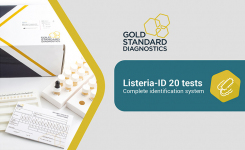Following on from concerns about inaccurate, fraudulent or misleading labelling of meat-based products which were raised during 2013 after numerous reports of horse and pig meat being detected, but not disclosed as contents, in beef-based products sold in supermarket chains across Europe. A new method has been recently published in the Journal of Agriculture and Food Chemistry, using liquid chromatography and tandem mass spectrometry (LC/MS/MS) to detect a number of biomarker peptides that are specific to pig and/or horse.
Developed by the University of Münster and AB SCIEX, the method is based on mass spectrometry and offers a more accurate and reliable approach to meat speciation than other approaches. It can detect markers of multiple, different animal species in a single run vs. traditional methods, such as PCR or ELISA. These older, widely-used approaches detect the animal's DNA or intact animal proteins, respectively, but both of these approaches have limitations, particularly their lack of specificity, which can lead to false negative or false positive findings. The method allows routine food testing laboratories that have access to suitable mass spectrometry platforms to test products quickly and easily for trace amounts of pig and horse contamination, helping to confirm halal authenticity.
The new method was developed using a two-pronged LC/MS/MS approach, utilizing the TripleTOF® 5600 system first to identify the unique protein markers specific to a meat species, then utilizing the QTRAP®5500 system to detect and confirm the presence of targeted meat peptides in unknown samples. The QTRAP® 5500 system uses multiple reaction monitoring (MRM) to detect each peptide and is then capable of providing sequence information by acquiring a product ion scan for each triggered MRM, which can be used to confirm the peptide's identity.
Horse and beef protein markers may differ by as little as one or two amino acids, so it is important to have confidence in the results when distinguishing between species in food testing. The new method presents the first MRM and MRM3 method for rapid and sensitive detection of both species (down to 0.13-0.25%), using routinely available MS techniques.


















